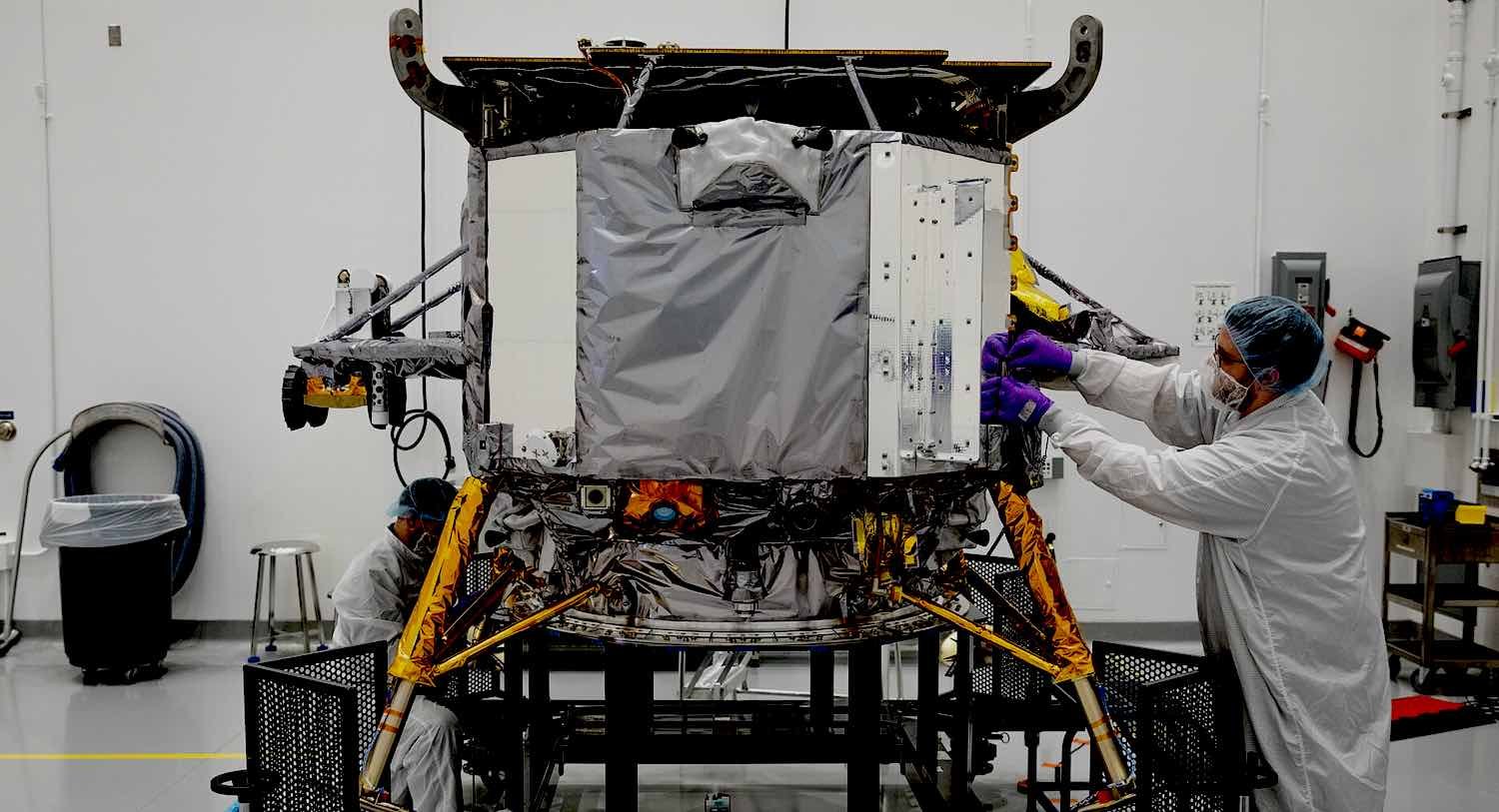An “anomaly” that followed shortly after a successful launch on Monday–one that seemingly set the stage for the first soft landing of a spacecraft on the Moon in more than 50 years–brought an ambitious space mission carrying human remains to a premature end yesterday.
Shortly after separating from a United Launch Alliance (ULA) rocket early Monday morning, Peregrine, a lunar lander built by Pittsburgh-based space company Astrobotic, began to receive telemetry data from NASA’s Deep Space Network, as its avionics, propulsion, and control systems all began to power on.
As Peregrine reached its fully operational state, everything appeared to be on track for the spacecraft as it began its ascent toward the Moon.
Then, something unexpected happened.
Shortly after entering its operational state, “an anomaly occurred” as the Peregrine team became aware of a system malfunction that prevented them from being able to control the spacecraft’s ability to achieve a stable sun-pointing orientation.
“The team is responding in real time as the situation unfolds,” read a mission update posted on the company’s X account, “and will be providing updates as data is obtained and analyzed.”
As the Peregrine team worked to try and determine the cause of the problem, the situation began to look increasingly dire. All indications pointed to a complication arising from the spacecraft’s propulsion system which, if confirmed, would likely end Peregrine’s mission before it ever came close to landing on the lunar surface.
“As the team fights to troubleshoot the issue, the spacecraft battery is reaching operationally low levels,” the company wrote in a subsequent update yesterday at 11:04 AM. As the spacecraft was nearing a brief communication outage, an improvised attempt to reorient the spacecraft’s solar panels was undertaken, aiming to point them toward the Sun.
Following the reestablishment of communication with the spacecraft, the team learned that their attempt to point Peregrine’s solar array toward the Sun had been successful, allowing the spacecraft’s battery systems to charge as the Peregrine team’s Mission Anomaly Board worked to try and determine what was affecting the spacecraft.
Soon, it became evident that the anomaly had occurred due to a failure within the spacecraft’s propulsion system.
“We are grateful for the outpouring of support we’re receiving,” Astrobotic wrote in another candid mission update, thanking the community of professionals within the space industry who “unite in the face of adversity.”
Hours later at 4:12 PM, Astrobotic released an image from Peregrine, captured from the camera positioned above the spacecraft’s payload deck which provided additional confirmation that a propulsion system anomaly was the root cause behind the lander’s precarious condition.
(1/4) We’ve received the first image from Peregrine in space! The camera utilized is mounted atop a payload deck and shows Multi-Layer Insulation (MLI) in the foreground. pic.twitter.com/dUuu0Idz8K
— Astrobotic (@astrobotic) January 8, 2024
With its solar array pointing toward the Sun, the spacecraft nonetheless was able to charge its battery, and the Peregrine team continued to carry out payload and spacecraft operations with the existing power stores.
“At this time, the majority of our Peregrine mission team has been awake and working diligently for more than 24 hours,” Astrobotic wrote in a subsequent update. “We ask for your patience as we reassess incoming data so we can provide ongoing updates later this evening.”
Shortly after 9:15 PM Eastern Time, Astrobotic shared what would be its final mission update of the day, confirming that an “ongoing propellant leak” had been causing Peregrine’s Attitude Control System (ACS) to malfunction, pushing its thrusters “to operate well beyond their expected service life cycles to keep the lander from an uncontrollable tumble.” Peregrine was given a best-case scenario of being able to maintain operations within a stable sun-pointing state for around 40 hours.
With the mission now effectively doomed, Astrobotic announced its aim was to continue to move Peregrine as close to the Moon as possible. However, once the spacecraft lost its ability to maintain its sun-pointing position, it would lose power at some point well before it reached its intended destination.
Still aboard the ill-fated spacecraft are several payloads that rank among some of the most unique ever to be sent to space. The cremated remains of humans that include several cast members from “Star Trek,” as well as DNA from former U.S. presidents, were all on board at the time the anomaly occurred, and presumably will remain adrift in space after Peregrine ceases operations.
The failed mission also raises significant questions for NASA, casting doubts on whether the American space agency will be able to safely rely on commercial partners to aid in reaching its scientific goals, particularly in advance of its plans to send humans back to the Moon in the years ahead.
Despite the mission failure, many took to social media to thank the company for its transparency on Monday as the propulsion system anomaly removed any possibility that Peregrine’s fuel stores would allow it to reach the Moon.
The transparency is top notch and highly respectable. Kudos. And good luck with anything y’all can salvage from this mission.
— Brett Huston (@tterb0331) January 9, 2024
“Appreciate the prompt and transparent updates!” wrote another of the company’s followers on X, who added that it was “unfortunate that we have approximately 40 hours left but nevertheless, to get to this point is still a great accomplishment!”
As of Tuesday morning, no additional updates had been shared by Astrobotic on the company’s website or on social media.
Micah Hanks is the Editor-in-Chief and Co-Founder of The Debrief. He can be reached by email at micah@thedebrief.org. Follow his work at micahhanks.com and on X: @MicahHanks.
